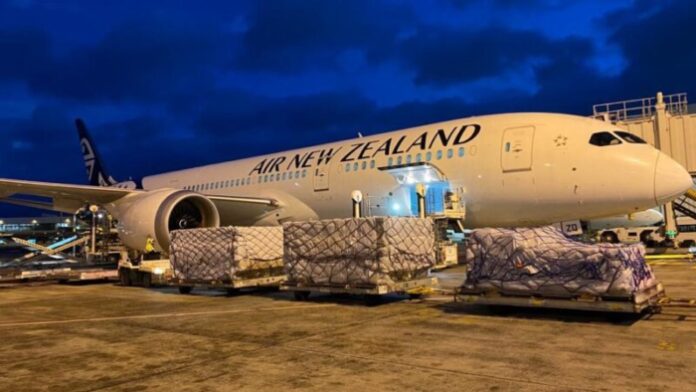
-
Worldwide cargo tonnages fell steadily in the first full week of December while the average rate remained stable, according to WorldACD
-
Xeneta says freight forwarders “wait and see” before making long-term air cargo capacity deals after airlines posted a 2% m-o-m demand drop in November
-
WorldACD says global rates are 26% below year-ago levels this time last year at an average of US$3.29 per kilo, but are still significantly above pre-COVID levels
As airfreight tonnages fall, the overall average rate remains stable ahead of the year-end holiday season after a steady fall in the first full week of December, market watchers say.
Freight forwarders are on a “wait and see” mode before making long-term air cargo capacity commitments after airlines registered a 2% month-on-month demand drop in November, a ninth consecutive month of decline for general airfreight volumes, Xeneta analysts say.
Cargo data analytics platform WorldACD reported a slow and progressive slide in air cargo demand for Week 49 (December 5 to 11) consistent with the slow steady decline in demand throughout the second half of this year.
World ACD cited a 3% slide in worldwide flown tonnages week on week and stable average prices while Xeneta reported a 2% decline month on month.
The current state of the air cargo industry reflected on Hong Kong’s flag carrier Cathay Pacific’s volumes, whichegan sagging in January 2022 and ended November this year 23.8% y-o-y lower and 79.9% far below the November 2019 level.
Cathay Pacific entered 2022 with a 31.8% drop in cargo volumes as it grounded most long-haul flights due to the COVID contagion.
Analysts at Xeneta discussed the airfreight downtrend on their weekly webinar on December 16 and their monthly air cargo update blog a day earlier.
Wenwen Zhang, airfreight analyst at Xeneta, said the November level was in fact a “little stability” returning.
“What we are seeing is a lot of uncertainty still. After such a big drop of -8% in air cargo demand in October, we saw a little stability return in November, so the market is not worsening; it’s just very hard to read longer-term,” she said. This reflected on the rise in short-term contracts, with forwarders unwilling to commit to long-term deals, she added.
Niall van de Wouw, chief airfreight officer at Xeneta, said shippers should see some benefit from the current situation in terms of their air and ocean budgets. “Falling rates may provide one glimmer of hope for cash-strapped consumers that potentially lower shipping costs in 2023 and will make some goods more affordable,” he said.
He said many other factors to consider included US dollar depreciation and its impact on trade.
The decrease in overall chargeable weight compared with the previous week can be seen in each main origin region, except for North America – which was still recovering from the impact of Thanksgiving – and Africa, WorldACD said.
Average prices remain stable from most origin regions compared with previous weeks. Exceptions are rates ex-Europe showing a more positive trend, while prices ex-Central & South America and ex-North America have been on a downward trend.
Comparing weeks 48 and 49 with the preceding two weeks (2Wo2W), tonnages eased 3% below their combined total in weeks 46 and 47, while average worldwide rates remained stable at a 2% rise in capacity, based on more than 350,000 weekly transactions covered by WorldACD’s data.
Across that two-week period, outbound tonnages were down significantly from Europe to all regions (-17% to Central & South America, -10% to Africa, -9% to Middle East & South Asia, -6% to Asia Pacific and -6% to North America, respectively), on a 2Wo2W basis.
Notable decreases were recorded on Asia Pacific to Middle East & South Asia (-7%), Middle East & South Asia to Europe (-7%) and from North America to Asia Pacific (-5%). But gains were noted in North America to Central & South America (+11%), and Africa to Europe (+6%).
Notably, tonnages ex-Asia Pacific are 23% below their strong levels this time last year, and Middle East & South Asia origin tonnages are 20% below last year
But there were also significant year-on-year drops in tonnages outbound from both North America (-18%) and Europe (-12%), despite (slightly) higher capacity, WorldACD said.
Capacity from Asia Pacific (-9%) and Central & South America (-7%) remains below levels this time last year, whereas it rose in Africa (+14%), North America (+4%), Middle East & South Asia (+4%), and Europe (+1%), capacity has rebounded above its levels this time last year.
WorldACD said global rates are now 26% below their unusually elevated levels this time last year at an average of US$3.29 per kilo, despite the effects of higher fuel surcharges, but they remain significantly above pre-COVID levels.




